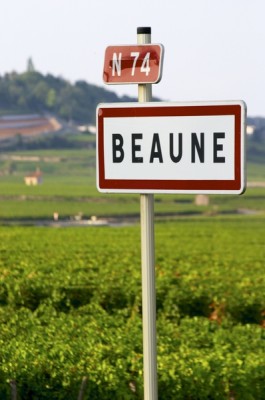Let Terroirs Travels create an intimate tour customized to your needs, or select one of our pre-packaged value tours for small groups . . .
Terroirs Travels will design itineraries, recommend and reserve hotels, restaurants, transportation, English speaking guides, cultural activities, special events and so much more.
We are Your Personal Concierge Abroad!
Highlights of the wine regions of Burgundy Wine Region
Many wine lovers claim that Burgundy wines — from the Burgundy wine region of France — are the greatest red wines in the world, while others insist that Bordeaux wines hold that claim. Nothing quite compares in aroma and flavor to a great red Burgundy.
Burgundy is a long, narrow wine region in eastern France, southeast of Paris. The French call the region Bourgogne, pronounced bor guh nyeh. Burgundy is a fragmented region, consisting of four somewhat contiguous districts (Chablis, Côte d’Or, Côte Chalonnaise, and Mâconnais) and one district that’s about 70 miles south of the other regions (Beaujolais).
The town of Beaune makes a fine hub from which to explore the burgundy region. The town is accessible from the A6 motorway from Paris to the north, or from Lyon to the south. Beaune is 40 km south of the Dijon airport.
Beaune Attractions
• Hospice de Beaune – a system of charitable hospitals, the first called the Hôtel-Dieu, was born on 4 August 1443 after the Hundred Years War was ended. While “écorcheurs” still pillaged the countryside, most of the people of Beaune were poor. Nicolas Rolin, Chancellor of the Duke of Burgundy Philippe le Bon, and his wife Guigone de Salins reacted by deciding to create a hospital for the poor. You can see this history in the building details–on the outside the Hôtel-Dieu is decidedly plain, reflecting its somber mission and making the complex less attractive to thieves. But once inside, the colorful tile roof reflect the wealth of the inordinately generous ruling class. The Hôtel-Dieu is now a museum that makes a fascinating visit.
• Basilique Notre Dame Church – Work on the church started in the 12th century
• Musee de la Vigne et du Vin (Burgundy Wine Museum) -Housed in a former residence of the Dukes of Burgundy, you can see the winemaking tools and machines as well as get an idea of the history of the region.
Burgundy’s soil and climate
Because of its unique terroir the Burgundy region excels in both white and red wines. The soils of Burgundy are extremely varied, in their richness, depth, and mineral content. The soils vary not only from one end of the region to the other, but also within a single area — for example, from the top of a hill to the bottom, or from one vineyard plot to the next.
Most vineyards have a base soil of limestone overlaid with limestone and marl (a mixture of clay and limestone), sometimes mixed with sand or gravel. Where limestone is dominant, white wines grow; where more marl exists, grapes for red wine grow.
The climate in Burgundy is continental for the most part: fairly warm summers, with the constant threat of hail, and cold winters. The region is northerly enough and cool enough that the grapes just about ripen in most years. Not every year is a good vintage; some years bring too much rain, or are too cool. Fortunately, the grapes grown in Burgundy are suited to cool climates.
The two great Burgundy grapes
 Nearly all the red wines of the Burgundy region derive from a single red grape variety, Pinot Noir. Both Pinot Noir and Chardonnay are thought to be native to the Burgundy region:
Nearly all the red wines of the Burgundy region derive from a single red grape variety, Pinot Noir. Both Pinot Noir and Chardonnay are thought to be native to the Burgundy region:
- Pinot Noir is notorious for being difficult to cultivate, because it requires very specific soil and climate parameters to produce its best fruit. Burgundy has that climate and soil. The Burgundy region has more success with this grape than any other wine region. Red Burgundy wines are the world’s finest examples of this challenging, but delicious, variety.
- Chardonnay is the other important variety in the Burgundy region, and the basis for the region’s most important white wines. Although Chardonnay is a nearly universal variety today, it reaches its height in Burgundy, where it makes complex, masterful wines that can age for decades.
The scale of Burgundy
Burgundy is a region of small vineyards, mixed ownership of vineyards, and relatively small production. Burgundy produces a total of about 22 million cases of wine annually. This quantity is only about a small part of Bordeaux’s production.
Burgundy’s vineyards are also much smaller than Bordeaux’s, meaning that less wine is available from any one vineyard. Where large vineyards do exist in Burgundy, they have multiple owners, so that many different wines exist from that one vineyard.


